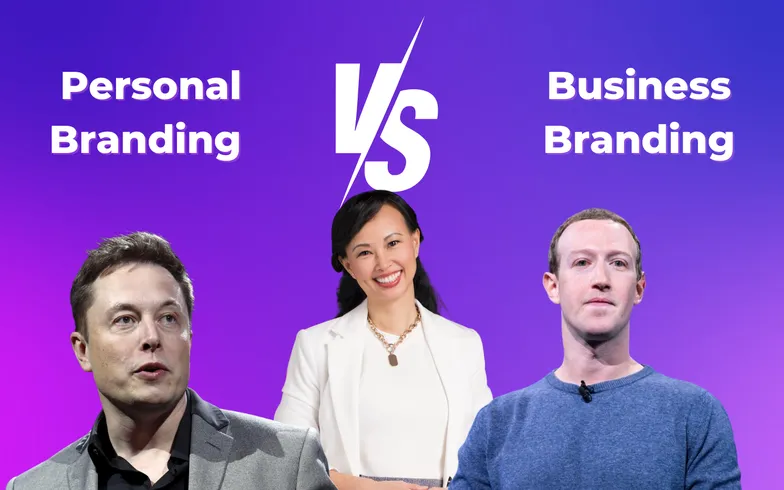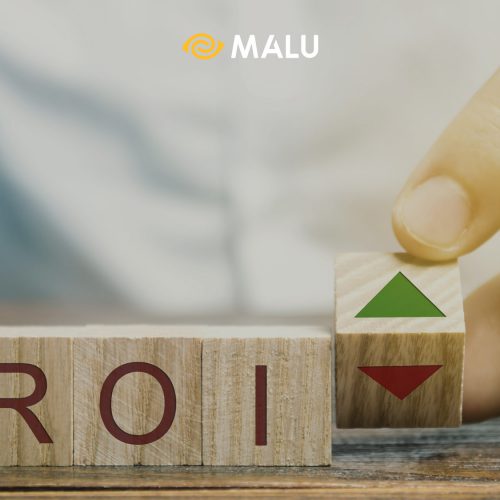
In recent years, the expansion of social networking platforms like TikTok and the emergence of artificial intelligence applications have changed the way we build and understand brands. Under the impact of these changes, many leaders and business owners have confidently appeared on media platforms, not only to build their personal brands but also as a way to support and promote their businesses. business brand.
1. Personal Branding và Business Branding
In the process of building Personal Branding , people often focus on creating a strong personal image by sharing personal stories and taking advantage of communication channels such as personal blogs and personal pages on platforms. social platform. For example, a writer can use a personal blog to share his creative journey and writing experiences, thereby creating a strong personal brand in the literary field.

In contrast, Business Brandin g focuses on building a professional image and scaling the business, often through official channels such as business websites and official pages on social networks. For example, a food manufacturing company can use its business website and official Facebook page to share information about its products, product quality, and commitment to health and food safety, thereby Build trust and reputation in the consumer community.
2. Distinguish between Personal Branding and Business Branding
|
Personal Branding |
Business Branding |
|
|
Object |
Closely related to a specific individual. |
Focus on the entire enterprise brand. |
|
Media channel |
Use personal channels such as personal blogs and personal pages on social platforms. |
Use official channels such as your business website and official pages on social platforms. |
|
Target |
Involves building personal credibility and creating a personal connection with the audience. |
Aim to create a professional image and expand business scale. |
|
Risk management |
Posing more personal risk, especially as an individual’s career becomes influenced by personal decisions. |
Risk can be managed more holistically and safety strategies can be applied to minimize negative impacts. |
|
Another aspect |
Involves sharing personal stories and keeping the brand close to the audience. |
Focus on shaping the common perception and values of the business. |
3. Advantages and disadvantages of Personal Branding and Business Branding
When faced with the decision to enter the business world, considering whether to start building a personal brand or a business brand is not just a flip of a coin but a trade-off between two different strategies. together. Each decision brings with it its own opportunities and challenges.
|
Advantages and disadvantages of Business Branding |
|
|
Advantage |
Defect |
|
Create trust: People often trust people more than brands. Therefore, personal branding can have a greater influence on audience behavior and decisions. |
Potential for confusion: Moving into a new business or venture can leave your audience confused about your personal image. |
|
Strengthen the corporate brand: Sharing personal stories can strengthen the corporate brand by creating a connection between the individual and the business. |
Requires time and effort: Maintaining a personal brand requires additional time and effort, otherwise it can lose value over time. |
|
Create opportunities: Personal brands can attract audiences if they pivot to another business or venture. |
Synchronize communications: Personal brands often reflect related business activities, so communications need to be in sync with company-related messaging. |
|
Advantages and disadvantages of Personal Branding |
|
|
Advantage |
Defect |
|
Organizational capabilities: Branding a business can be done by many people, making marketing and brand management happen effectively, whether you are there or not. |
Lack of personalization: People often trust brands less than they trust people, so corporate brands can struggle to build trust and close relationships with customers. |
|
Broad reach: Corporate brands can have a wider reach than personal brands, depending on the history and reputation of the business. |
Difficulty standing out: It can be more difficult for businesses to stand out than individuals in a competitive market. |
|
Higher level and more stable: Corporate branding is at a higher level and does not depend on the same level of transparency as personal branding. |
Vulnerable to competition and customer churn: Because of the lack of personalization, business branding can be more susceptible to competition and customer churn than personal branding. |
4. What do you get when combining Personal Branding and Business Branding?
Combining Personal Branding and Business Branding is not only a strategy worth considering but also an effective way to create a strong brand and create deep connections with customers. By closely linking the personal image of leaders and the values and goals of the business, it is possible to create a comprehensive interactive experience and create trust and commitment from customers. .

A clear example of the combination of Personal Branding and Business Branding is Elon Musk and Tesla . Elon Musk is not only the CEO of Tesla but also a symbol of innovation in the electric car industry. This combination not only helps create a strong personal brand but also contributes to building fans’ trust and commitment to Tesla. By sharing predictions about the future and even challenging public opinion on Twitter (now X), Elon Musk not only creates attention for himself but also increases his popularity. attention and trust in the Tesla brand.
In Vietnam, there are also many other examples of the combination of Personal Branding and Business Branding. For example, Ms. Hannaholala, Ms. Thai Van Linh, Ms. Chi Nguyen – The Present Writer, and Mr. Thai Cong are all content creators and business owners. Their personal image is not only tied to the brand they create but is also an important factor in building trust and creating a deep connection with the community.

For businesses, leveraging the power of employees’ personal brands is also an important strategy. By building employees’ personal brand images on social networking platforms, businesses can create engagement and loyalty from customers. At the same time, this also helps businesses develop a positive media community, creating a favorable interactive environment between businesses and customers.
5. Any combination has potential risks
While combining Personal Branding and Business Branding offers many benefits, it also comes with some risks that need to be managed carefully.
Personal image risk management: Combining Personal Branding and Business Branding means leaders become more responsible for their behavior and words. They need to ensure that they maintain a positive image and are consistent with the values and goals of the business. For example, if a leader is caught up in a personal scandal, the corporate brand can be seriously damaged.

Control and manage messages: Personal messages when communicated on social networks, newspapers, the internet… need to be consistent with the message and image that the business wants to convey, and vice versa.
However, with careful planning and management, these risks can be minimized and the combination of Personal Branding and Business Branding can bring greater benefits to businesses.
Conclusion
In today’s competitive and diverse business world, deciding to build a personal or corporate brand is not only a decision on marketing strategy but also how leaders and businesses build and Maintain influence in the online community. In the context of the artificial intelligence era and the explosion of social networking platforms like TikTok, a clear understanding of the pros and cons of both Personal Branding and Business Branding will help marketers design effective marketing strategies. more effective for your goals. It’s important to not only focus on building your brand, but also on maintaining and growing it over time.




